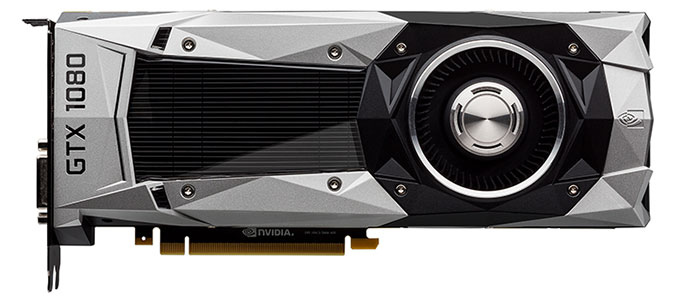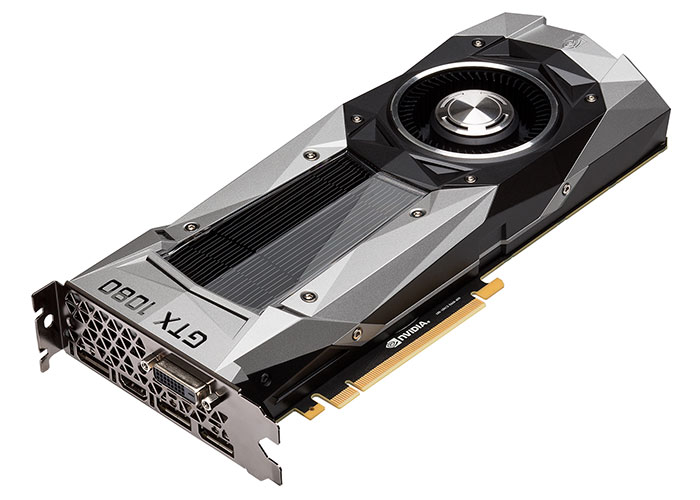Our Aim
To provide you with an overview on New And existing technologies, hopefully helping you understand the changes in the technology. Together with the overviews we hope to bring topical issues to light from a series of independent reviewers saving you the time And hassle of fact finding over the web.
We will over time provide you with quality content which you can browse and subscribe to at your leisure.
TekSpek 's

NVIDIA GeForce GTX 1070 & 1080
Date issued:
The wait is finally over as Nvidia has unveiled the eagerly anticipated GeForce GTX 1080 graphics card.
Launched as a successor to the hugely popular GeForce GTX 980, the new GPU slots in at the top of NVIDIA's consumer lineup and touts a number of revolutionary performance enhancements for enthusiast users. Chief among these is the introduction of a brand-new architecture, codenamed Pascal, that in addition to promising a 2x performance increase compared to GeForce GTX Titan X, is also said to deliver a 3x increase in power efficiency.
The gains can, in part, be attributed to the use of a cutting edge TSMC 16nm FinFET manufacturing process, making the GeForce GTX 1080 the first high-profile consumer graphics card to debut on a sub-20nm process. This means a greater number of transistors can be arranged together, with the GTX 1080 core touting an impressive 7.2 billion transistors in a 314mm² package that consumes, as a card, no more than 180W.

NVIDIA's industrial design has a familiar look and feel, with the card maintaining a 10.5in length that's in keeping with previous-generation solutions, but angular accents provide a sense of the superior performance lying within. And the shroud doesn't just look impressive, it's also boasting a few under-the-hood improvements as the underlying cooler is outfitted with a vapour chamber to maximise cooling performance and bolster the card's overclocking credentials.
Speaking of overclocking, there could be plenty of headroom for enthusiasts to manoeuvre. Taking full advantage of the lean 16nm GPU and with the aid of new Turbo Boost 3.0 technology, Nvidia's GeForce GTX 1080 will ship with core and boost frequencies of 1,607MHz and 1,733MHz, respectively. Do the math and you'll find that peak frequency is a staggering 43 per cent higher than the outgoing GeForce GTX 980.

A leaner, faster and more capable GPU is the key attraction, yet it's joined by another eye-catching feature in the form of GDDR5X memory. GeForce GTX 1080 will be the first high-end consumer graphics card to utilise the newer memory technology and will feature an 8GB implementation sourced from Micron and attached via a 256-bit interface.
Running at 10Gb/s, the 8GB GDDR5X frame buffer will provide 320GB/s of memory bandwidth, and Nvidia has everything wrapped into a tidy package requiring only a single eight-pin power connector.
The GeForce GTX 1080 core uses a refinement of the architecture present on Maxwell which powered the 900-series of Nvidia graphics cards. But Pascal adds more of everything into the mix, so here's how the new GPUs - GTX 1080 and GTX 1070 - stack up against the previous generation bearing the same names.
GeForce GTX 1080 |
GeForce GTX 1070 |
GeForce GTX 980 |
GeForce GTX 970 |
|
| Launch date | May 2016 |
June 2016 |
September 2014 |
September 2014 |
| Architecture | Pascal |
Pascal |
Maxwell |
Maxwell |
| Process (nm) | 16 |
16 |
28 |
28 |
| Transistors (bn) | 7.2 |
7.2 |
5.2 |
5.2 |
| Core Clock (MHz) | 1,607 |
TBC |
1,126 |
1,050 |
| Boost Clock (MHz) | 1,733 |
TBC |
1,216 |
1,178 |
| Memory Size | 8GB |
8GB |
4GB |
4GB |
| Memory Bus | 256-bit |
256-bit |
256-bit |
256-bit |
| Memory Type | GDDR5X |
GDDR5 |
GDDR5 |
GDDR5 |
| Memory Clock | 10Gbps |
TBC |
7Gbps |
7Gbps |
| Power Connector | 8-pin |
TBC |
6-pin + 6-pin |
6-pin + 6-pin |
| TDP | 180W |
TBC |
165W |
145W |
| Launch MSRP | $599 |
$379 |
$549 |
$329 |
GeForce GTX 1070
Readers will note that the GeForce GTX 1080 arrives with a $50 premium compared to its 2014 predecessor and is now joined by a second-rung solution, the GeForce GTX 1070. This card uses the same die as its bigger brother but switches off one of the four GPC clusters that make up the architecture. This means it has 25 per cent fewer shaders and texture units. The frequencies, too, have been reduced a little, as has power consumption, though it is still presented in the same reference heatsink design.
And instead of using new-fangled GDDR5X, NVIDIA puts much of the learnings back into normal GDDR5 and equips the GTX 1070 with 8GB of RAM running at 8Gbps - the fastest-ever speed for regular memory. Performance is still mightily impressive, mind, with GTX 1070 matching the GeForce GTX 980 Ti and GeForce GTX Titan X albeit with a smarter architecture, lower price and lower power consumption to boot.
Appreciating the fact that enthusiasts have in the past taken a particular liking to Nvidia's reference design, the company has 'Founders Edition' variants of the GTX 1080 and GTX 1070 available at launch. Providing a reference experience, these stock cards will likely be sought after but will attract a higher premium, with pricing set at $699 and $449, respectively.
Summary
With new architectures arriving from both AMD and NVIDIA, this is shaping up to be a truly exciting summer for PC gamers. We can look forward to a wave of forward-looking graphics cards, and it's Nvidia who has stepped up first with the GeForce GTX 1080 and GTX 1070.
Introduced as a showcase for the firm's new Pascal architecture and built on an advanced 16nm process, GTX 1080 and GTX 1070 are undoubtedly two of the most attractive graphics cards to date and are certain to be hot sellers in the weeks ahead.

A wide range of GeForce GTX 1080 & 1070 graphics cards will are of course available to purchase at Scan Computers.